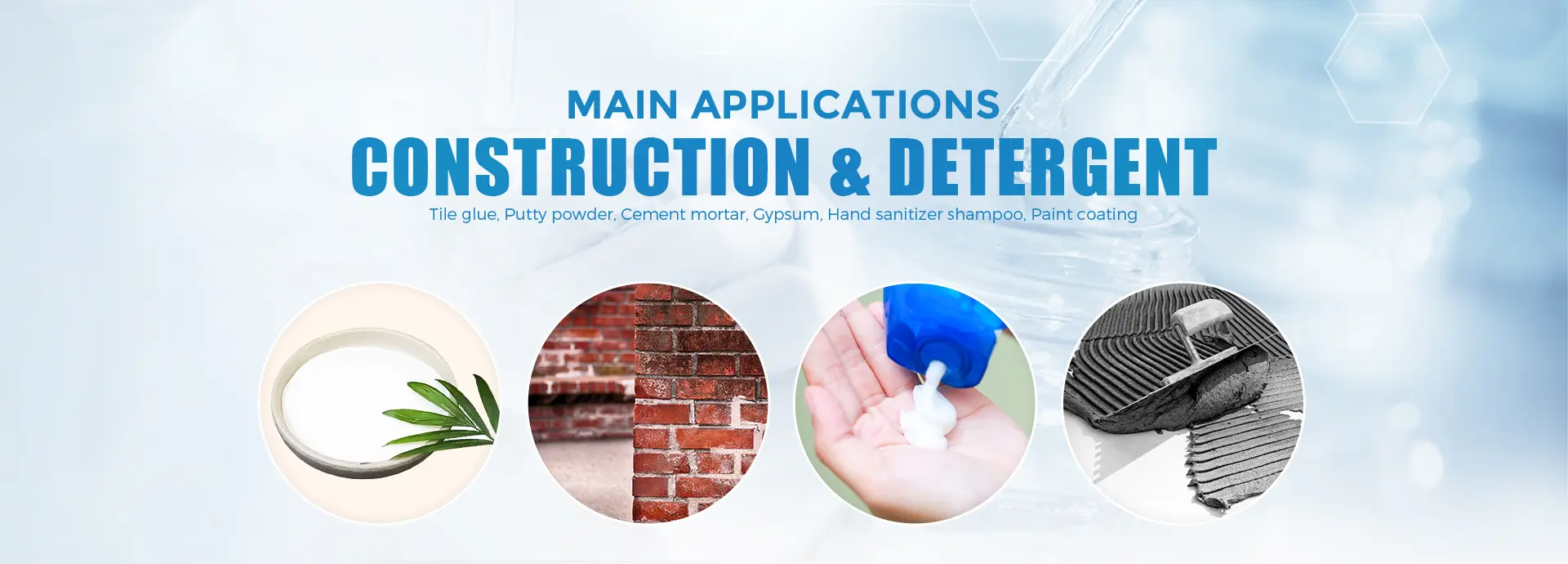Understanding Hydroxypropyl Methylcellulose (HPMC) and Its Chemical Properties
Hydroxypropyl Methylcellulose (HPMC) is a versatile cellulose ether widely utilized in various industries, including pharmaceuticals, food, cosmetics, and construction. Characterized by its non-ionic nature, HPMC is derived from natural cellulose, offering a unique blend of physical and chemical properties that make it highly functional for a myriad of applications. This article aims to explore the chemical composition, properties, and applications of HPMC, emphasizing its significance in various sectors.
Chemical Composition
HPMC is produced through the modification of cellulose, a natural polymer obtained from plant cell walls. The process involves reacting cellulose with propylene oxide and methyl chloride, resulting in a compound that features hydroxypropyl and methyl substituents on the glucose units of the cellulose backbone. The degree of substitution and the molecular weight of HPMC can vary, influencing its solubility and viscosity in aqueous solutions.
The chemical formula of HPMC can be represented as (C6H7O2(OH)3−x(OR)x)n, where R represents the hydroxypropyl or methyl groups. The degree of hydroxypropyl substitution (HPS) and the degree of methyl substitution (MDS) are critical factors that determine its physical properties, such as viscosity and gel-forming capabilities.
Properties
One of the standout features of HPMC is its solubility. It is soluble in cold water, forming a clear and viscous solution, which is a critical attribute for many applications. The ability to form gels and emulsions makes HPMC a valuable ingredient in food products and cosmetic formulations.
Additionally, HPMC exhibits excellent thermal stability, non-toxicity, and good film-forming properties. These characteristics are particularly advantageous in the pharmaceutical industry, where HPMC is often utilized as a binder in tablet formulations, a thickening agent in suspensions, and a coating polymer for sustained-release formulations. Its film-forming abilities allow for the creation of controlled-release delivery systems, improving the bioavailability of various drugs.
chemical hpmc hydroxypropyl methyl cellulose

Applications
In the pharmaceutical industry, HPMC plays an essential role as a controlled-release agent in various dosage forms. Its gel-forming abilities allow for the modulation of drug release, making it ideal for formulations that require prolonged therapeutic effects. HPMC is also recognized for its use in ophthalmic solutions and other formulations where a smooth, high-viscosity liquid is necessary.
In the food industry, HPMC serves as a thickener, stabilizer, and emulsifier. It enhances texture, improves mouthfeel, and increases shelf-life, making it a preferred ingredient in low-fat and gluten-free products. The ability to gel also allows HPMC to be utilized in products such as salad dressings and sauces.
Moreover, in cosmetics and personal care products, HPMC is employed for its thickening and film-forming properties. It contributes to the stability and efficacy of lotions, creams, and gels, ensuring a desirable application experience for consumers.
Finally, the construction industry benefits from HPMC as an additive in cement mortars and tile adhesives. It improves workability and water retention, facilitating better adhesion and prolonging the setting time of materials.
Conclusion
Hydroxypropyl Methylcellulose is a remarkable chemical compound with a broad range of applications across multiple industries. Its unique chemical composition, coupled with its solubility, film-forming properties, and stability, make it an essential ingredient in pharmaceuticals, food products, cosmetics, and construction materials. As industries continue to evolve, the demand for versatile and effective additives like HPMC is likely to grow, reinforcing its significance in modern formulations. Understanding HPMC's properties and applications allows for better utilization in various products, ultimately enhancing performance and consumer satisfaction.






